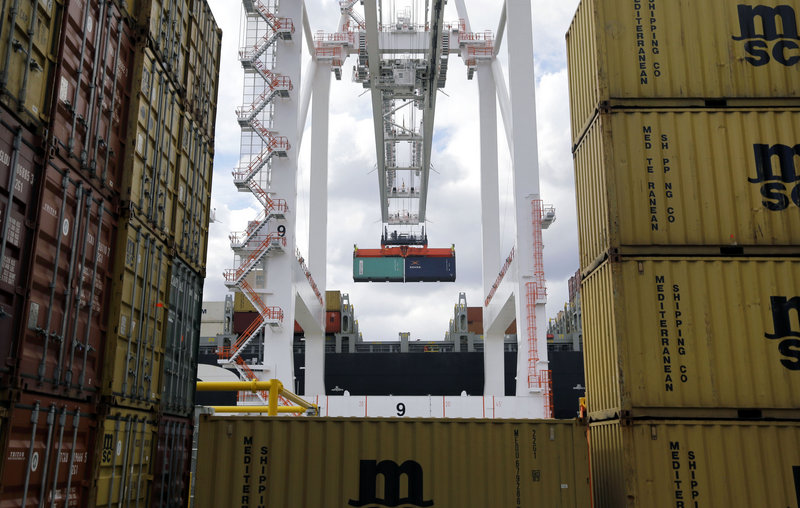WASHINGTON – Fewer Americans are losing their jobs. Employers are struggling to squeeze more work from their staffs. The United States is producing so much oil that imports are plunging, narrowing the trade deficit.
A string of data Thursday raised hopes for stronger hiring and U.S. growth in coming months. More jobs would spur spending and help energize the economy, which has yet to regain full health nearly four years after the Great Recession officially ended.
An interest rate cut Thursday by the European Central Bank, if it helps bolster the European economy, could also contribute to U.S. growth.
The U.S. economic reports came one day before the government will report how many jobs employers added in April. Economists think the gain will exceed the 88,000 jobs added in March, the fewest in nine months.
The government said Thursday that the number of Americans applying for unemployment aid fell last week to a seasonally adjusted 324,000 — the fewest since January 2008. Unemployment applications reflect the pace of layoffs: A steady drop means companies are shedding fewer workers. Eventually, they’ll need to hire to meet customer demand or to replace workers who quit.
The four-week average of unemployment applications, which is less volatile than the weekly figure, sank to 342,250. That was near a five-year low.
The figures for unemployment applications “point to potential improvement moving into May,” said Ted Wieseman, executive director of Morgan Stanley Research.
The government also said Thursday that the productivity of U.S. workers barely grew from January through March after shrinking in the last three months of 2012. Productivity shows how much employees produce per hour of work. When it remains weak, employers can’t keep pulling more output from their staffs. As customer demand strengthens, they’ll need to hire.
Productivity grew at a seasonally adjusted annual rate of 0.7 percent in the January-March quarter. And that was after it shrank in the October-December quarter. For all of 2012, productivity rose a scant 0.7 percent, after an even punier 0.6 percent rise in 2011.
At the same time, the government said the U.S. trade deficit narrowed in March for a second month. The main reason: The daily flow of imported crude oil reached a 17-year low.
The trade gap shows how much the value of imports exceeds the value of exports. A smaller trade gap is good for economic growth because it means America is exporting more while spending less on foreign goods.
The gap shrank 11 percent from February to $38.8 billion. Exports fell 0.9 percent, led by fewer shipments of U.S. machinery, autos and farm products.
But thanks to reduced U.S. demand for imported oil, imports fell even more — 2.8 percent. Petroleum imports fell 4.4 percent. Crude oil imports averaged 7 million barrels a day, the fewest since March 1996.
Surging U.S. production has reduced the need for imported oil. U.S. output averaged 7.2 million barrels a day for the four weeks that ended March 29, the Energy Department says. That’s the most since 1992.
U.S. refiners have been taking advantage of low U.S. prices for oil and natural gas to produce fuels at much lower costs than their foreign competitors can.
Despite Thursday’s figures, the economy isn’t growing fast enough to reduce high unemployment. The Federal Reserve reiterated Wednesday after a policy meeting that it plans to keep short-term interest rates at record lows at least until unemployment falls to 6.5 percent from its current 7.6 percent.
Copy the Story Link
Send questions/comments to the editors.



Success. Please wait for the page to reload. If the page does not reload within 5 seconds, please refresh the page.
Enter your email and password to access comments.
Hi, to comment on stories you must . This profile is in addition to your subscription and website login.
Already have a commenting profile? .
Invalid username/password.
Please check your email to confirm and complete your registration.
Only subscribers are eligible to post comments. Please subscribe or login first for digital access. Here’s why.
Use the form below to reset your password. When you've submitted your account email, we will send an email with a reset code.